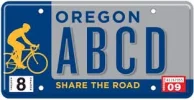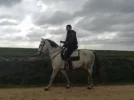@davebugg Did not get back to this yet because your post made me wonder about subjects like legacy and heritage in general, and I drifted off to the UNESCO website to get an idea of what actually is considered 'the heritage' while recognizing the Camino as world heritage. Interesting stuff, maybe worth another thread some time.

As to the point you made. The question "who was here first, historically ?" - it may seem a simple question, but I think it is not, as it very much depends on which "benchmark" (if this is the correct word) one uses, and what we mean with "here".
With "here" I tend to refer to the paths we walk nowadays, and these are for a large part existing paths and roads that were redesigned as the
Camino Frances during the 80's. The current CF paths are mostly not the paths that were walked by pilgrims in the middle ages., the medieval footpaths are often now roads. So when us modern-day walkers claim we were "here" first, we actually mean our 'predecessors' were "over there" first : somewhere where there is now a road or highway". I have read people giving the argument "that we have been walking here for centuries". This is factually not true.
Using the 80's camino revival (and the establishment of the current path) as a benchmark, I conclude that both walking and cycling pilgrims were "here" first - as a substantial number of pilgrims since the 80s' are cyclists. In addition to that, and presuming local Spaniards rode their bikes along country paths in the 70's (also on the paths that were designed as the CF in the 80's) one could argue that they were the ones that were "here" first. You are probably right that mountain bikes were not in use in the 80's though.
I wrote that "they may have cycled here before us", to put into context someone's assumption that us walkers were here first. However, I did not intend to promote the legacy argument as a major argument in this discussion about etiquette on shared paths. I actually find the legacy argument rather uncomfortable in general, as arguments about ownership of territories and claimed historic rights often lead to polarisation and have been the subject of some rather nasty political conflicts all over the world.
Not sure if I full grasp what you meant to say. But - back to the subject of this thread (how we can all behave senisbly on a mixed path). Let me just make clear that I do not deny that accidents happen and friction exists. And I do acknowledge there are cyclists/bikers that behave dangerously. And I do think a risk assesment is advicable for certain stretches of the Camino which are narrow. And I do agree that anecdotical evidence could be helpful in this assessment. Of course then we may disagree about which level of risk is acceptable, and what are effective, necessary and proportional measure to reduce the risks.
It would make sense if local cyclists & cycling associations are to be involved in this process of risk assessment. In fact I stumbled upon a Spanish cycling site, that advices cyclists to follow the main road from Riego de Ambros to Molineseca as it considers cycling this stretch as potentially dangerous. Maybe the relevant authorities should decide that this is a stretch that should no longer be used as a mixed path. But imho NOT because pilgrims have walked this particular stretch for centuries as has been mentioned in one post (it is more likely that medieval pilgrims followed the road close to the camino path), but because it is the best safety option given the current situation on such a stretch, which could justify a general infringement on the rights of cyclists on this particular stretch as being proportional. In principal I do not see a reason why this should automatically imply that, on this stretch, all cyclists should cycle somewhere else - we could also walk somewhere else. I actually walked this part on the road (as I found the camino path too busy with walkers), no big deal. However, when large numbers of people start walking on this road, this would possibly lead to new safety issues.































